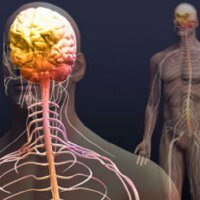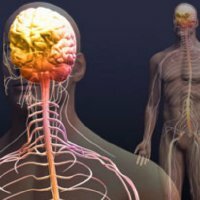The autonomic nervous system

The autonomic nervous system is a specific part of the nervous system, a complex of peripheral cell structures and central cellular structures that regulate the functional level of the body's internal work necessary for the normal reaction of all body systems. VNS often has other names: ganglionic, organ and celiac nervous systems.
The autonomic nervous system has an important role in the human body, because this part of the nervous system normalizes the glands of internal secretion, the work of internal organs, lymphatic and circulatory systems, glands of external secretion. In addition, the vegetative system constantly supports the internal environment of the body, and also takes part in adaptive reactions of vertebrates.
The autonomic nervous system is functionally and anatomically divided into parasympathetic, sympathetic and metasympathetic nervous systems.
Parasympathetic and sympathetic centers are controlled by hypothalamic centers and bark of the cerebral hemispheres. In these two departments is located the peripheral and central parts. The central part consists of neurons that are in the brain and spinal cord. The accumulations of these nerve cells are called vegetative nuclei. From the vegetative nuclei, the fibers and vegetative ganglia that extend beyond the central nervous system( the central nervous system) and the nerve plexuses located in the walls of the internal organs form the peripheral part of the VNS( the autonomic nervous system).
In the spinal cord there are sympathetic nuclei. Nerve fibers that depart from sympathetic nuclei, terminate beyond the boundaries of the spinal cord, namely in sympathetic nodules. From sympathetic nerve nerve fibers originate and approach all internal organs.
In the oblong and middle brain, in the sacral region of the spinal cord, parasympathetic nuclei are located. Nerve fibers that extend from the nuclei of the medulla oblongata are present in the vagus nerves. Nerve fibers from the nuclei of the sacral region approach the organs of excretion and intestines.
The metasympathetic nervous system includes nerve plexuses and small ganglia in the walls of the heart, bladder, in the walls of the digestive tract and other organs. The work of the vegetative system does not depend on the will of man in any way.
Parasympathetic nervous system contributes to the restoration of energy reserves, which were spent by the body, also during sleep normalizes all body functions.
The sympathetic nervous system increases the excitability of a number of tissues, enhances the metabolism, mobilizes the body's strengths for active activity.
The motor effector neuron is located at the periphery in comparison with the somatic system in an autonomous system, and the spinal cord controls its impulses, but only indirectly.
The autonomous system controls not only the respiratory, circulatory, excretory, digestive, and reproductive organs. It also controls the growth and metabolism. In general, the efferent department of the VNS realizes the nervous regulation of the work of organs and tissues, except skeletal muscles, they are under the control of the somatic nervous system.
Terms such as autonomous system, sympathetic system, visceral nervous system are ambiguous. To date, the sympathetic nervous system is only a fraction of the visceral efferent fibers.
But in different medical literature( which was written by different authors), the term "sympathetic" is used in different ways: in the form of a synonym for the word "autonomous";in a narrow sense( for example, as in the sentence above);It is used as the name of the entire autonomic( visceral) nervous system - the efferent system and the afferent system.
An autonomic nervous system is also called the entire vegetative( visceral) system, both the afferent system and the efferent system. Because of this, terminological confusion often arises.



